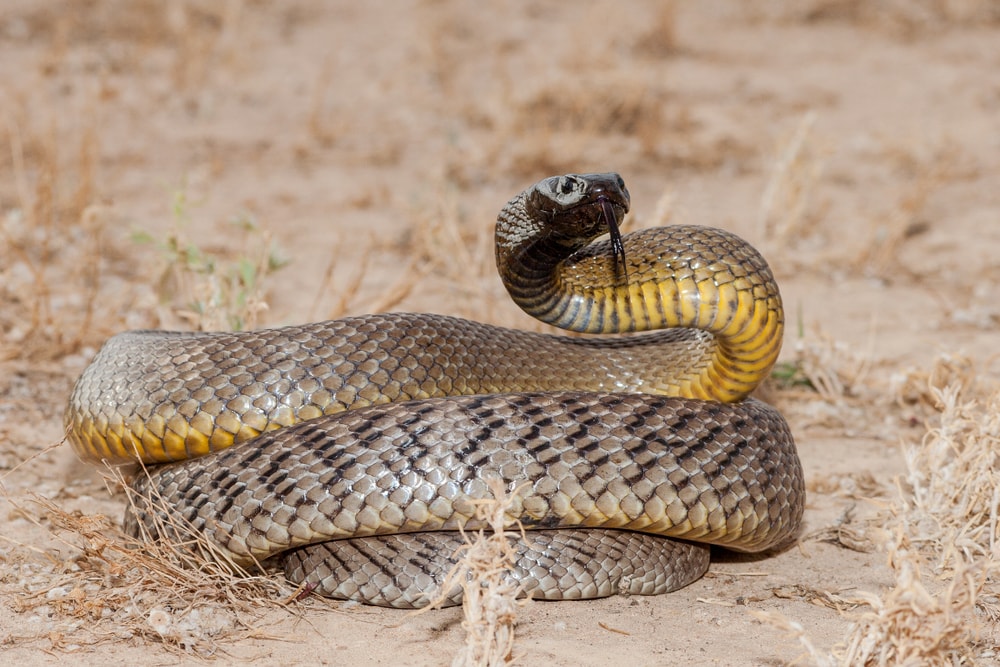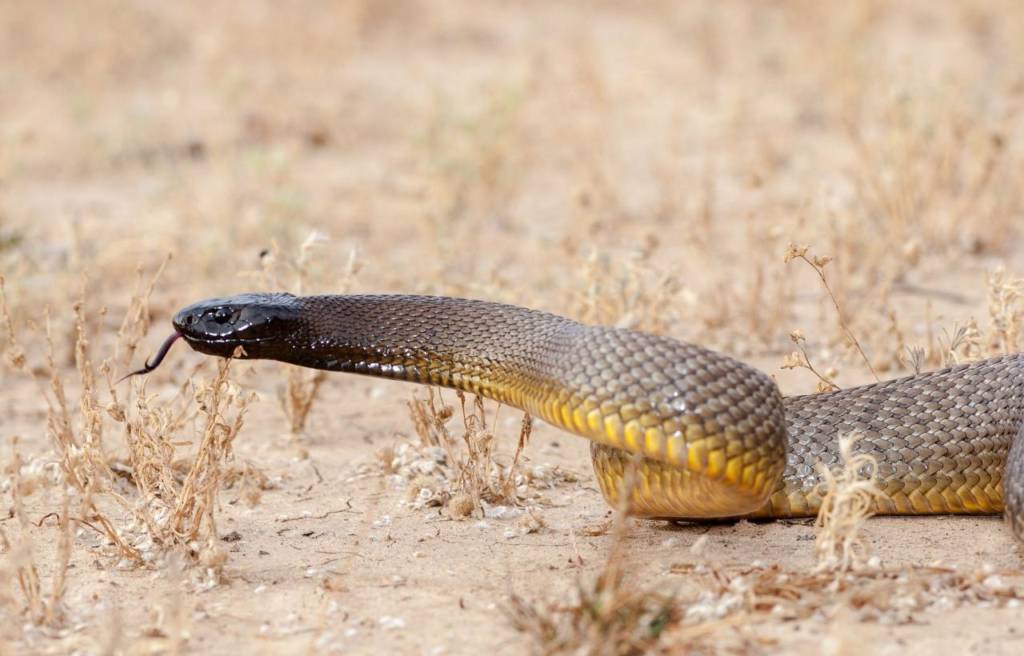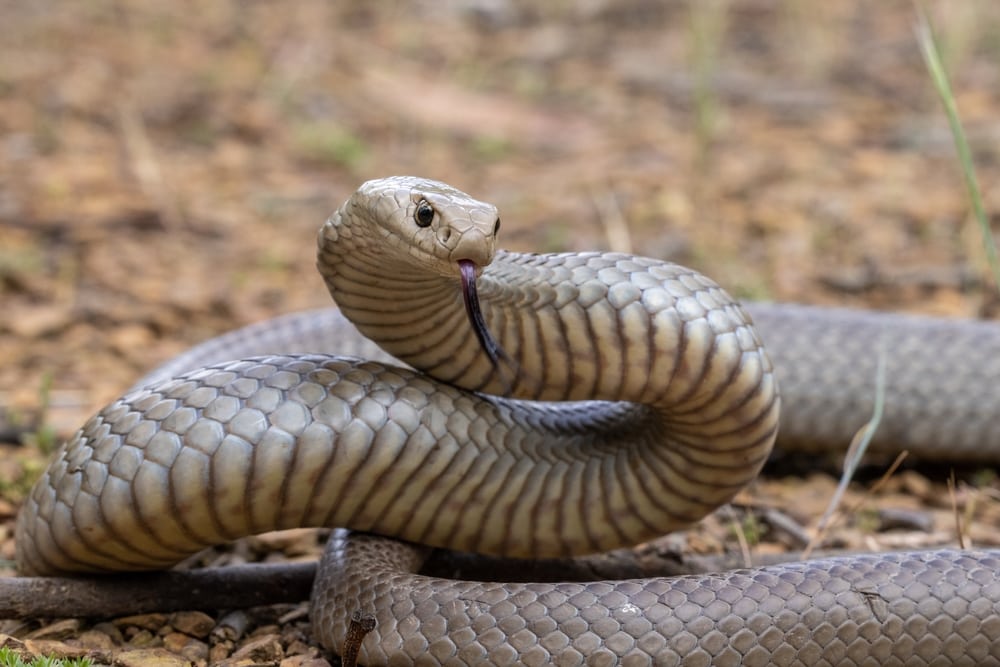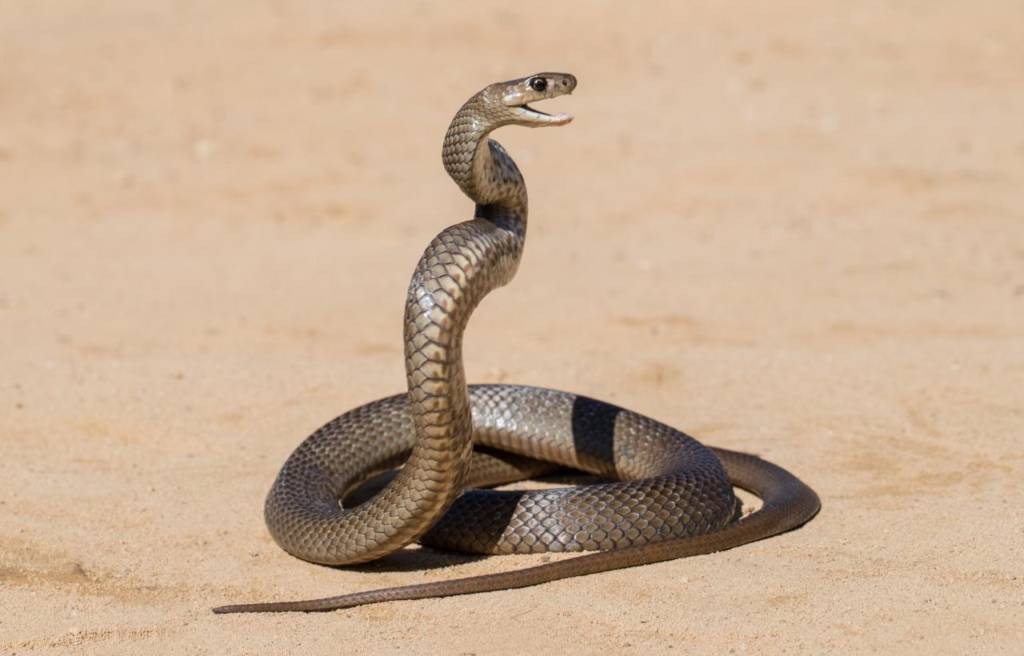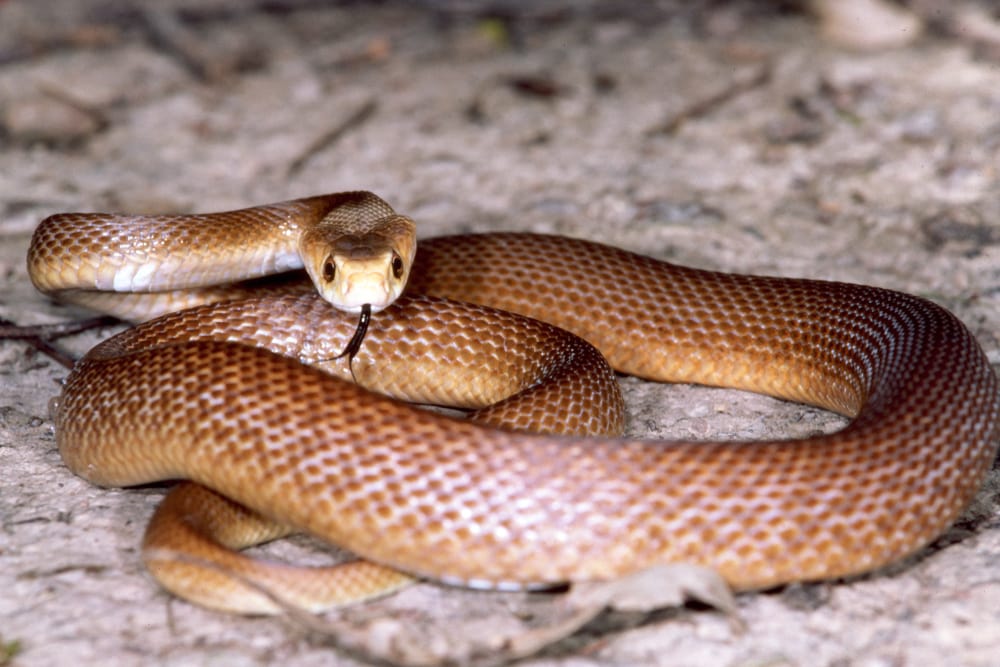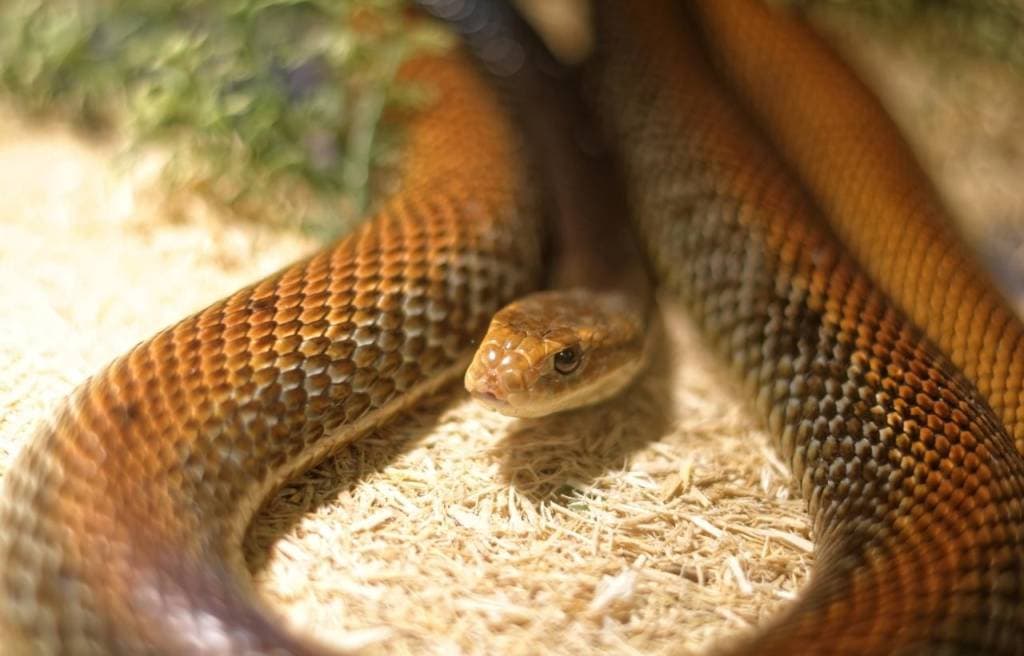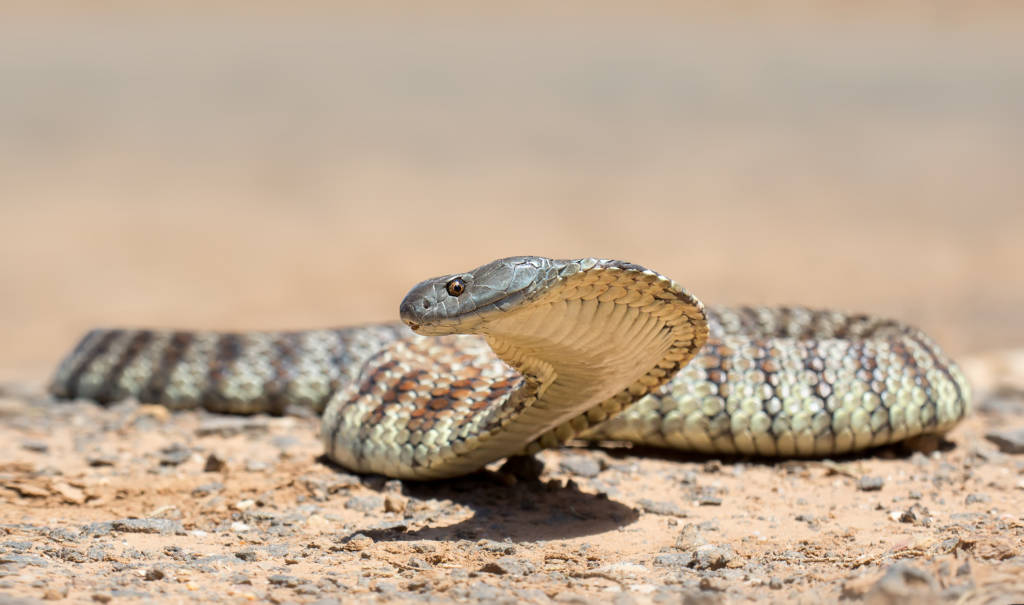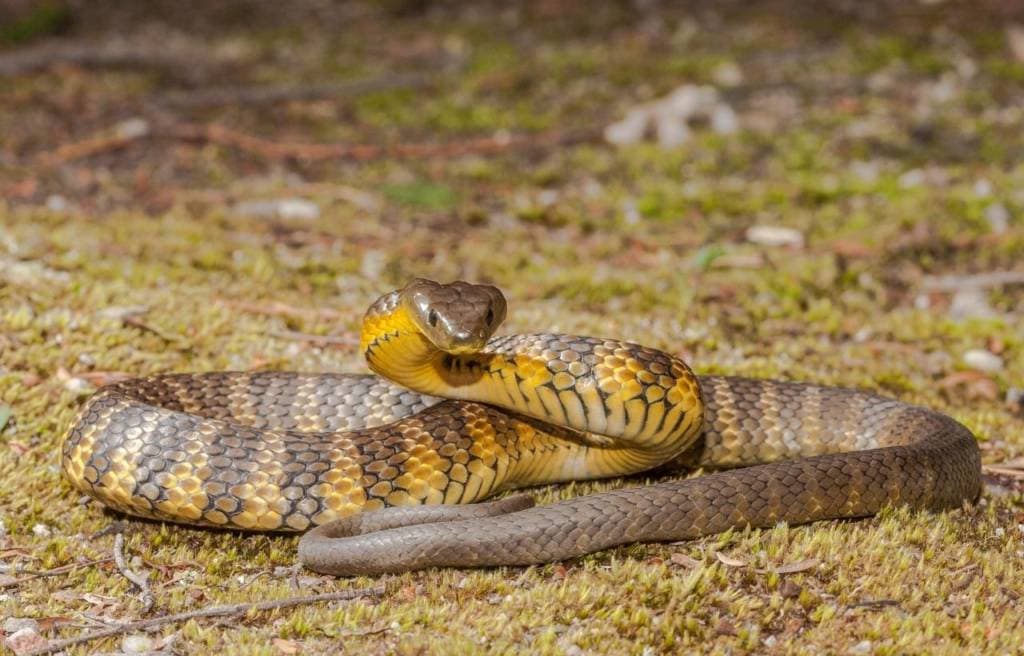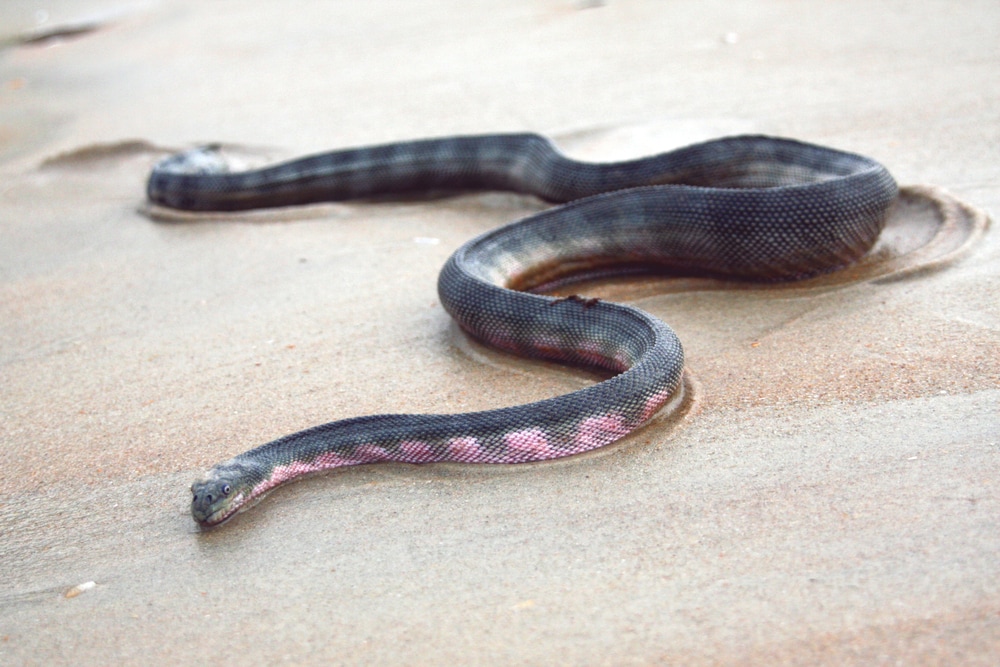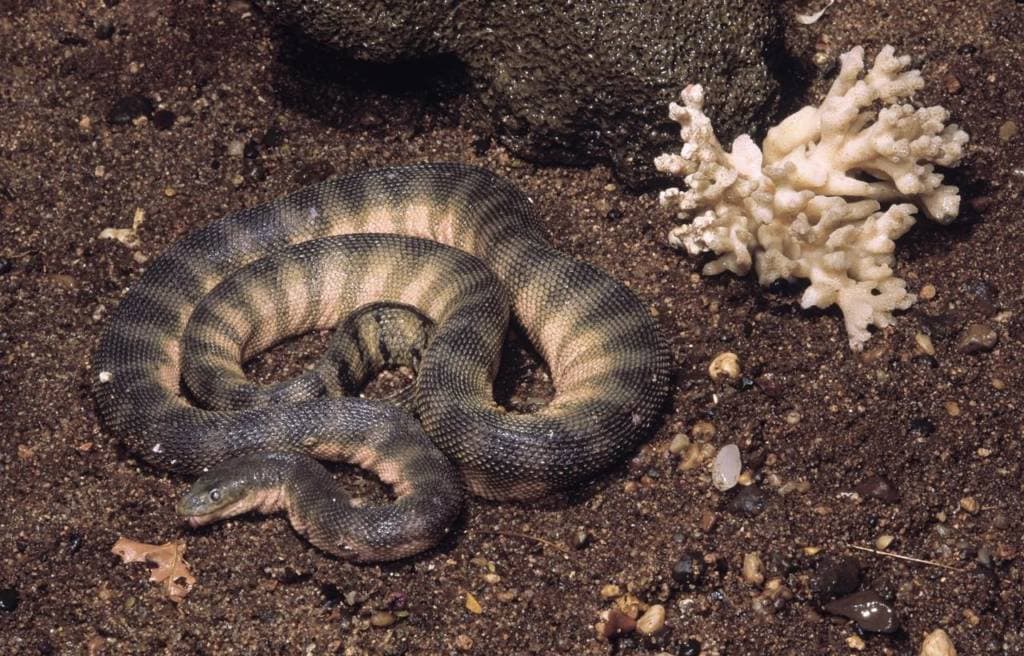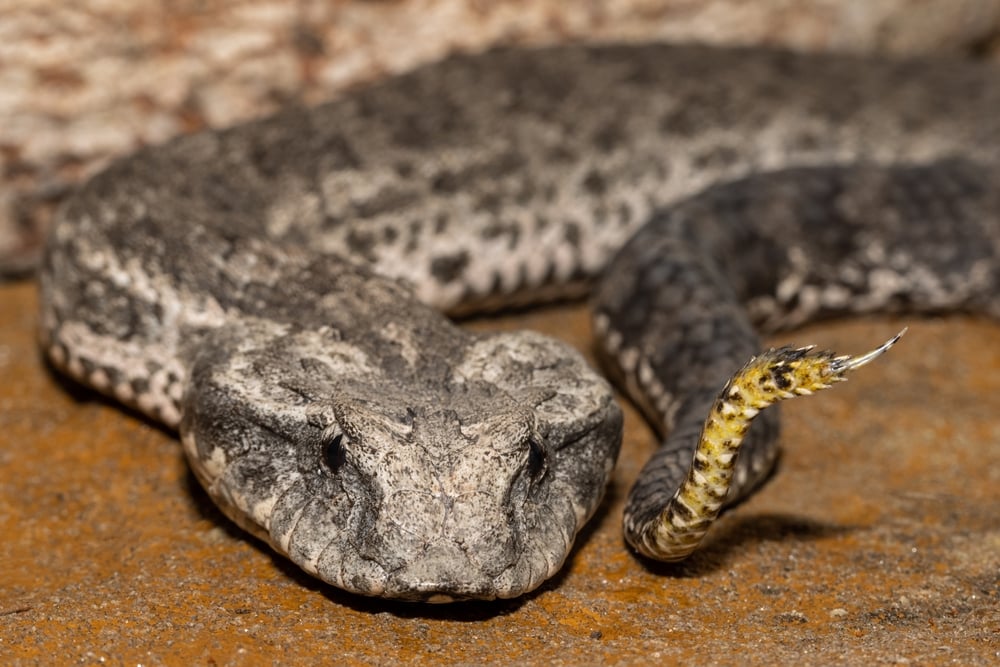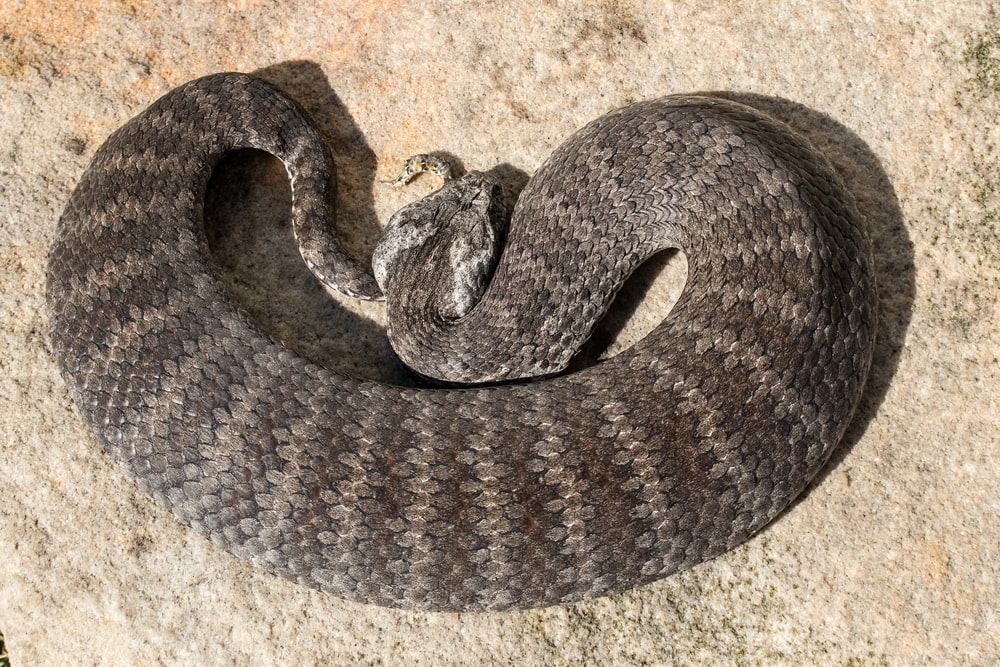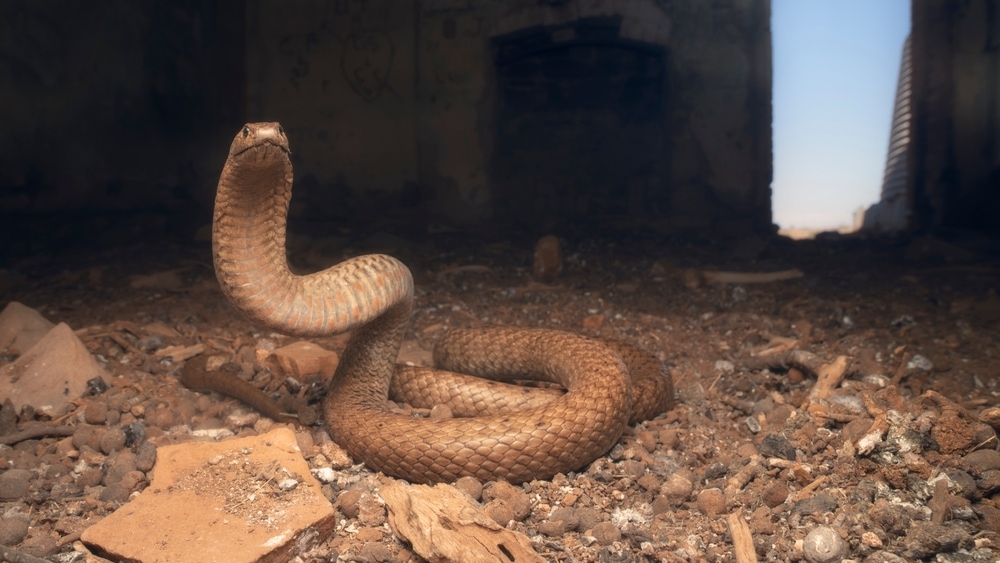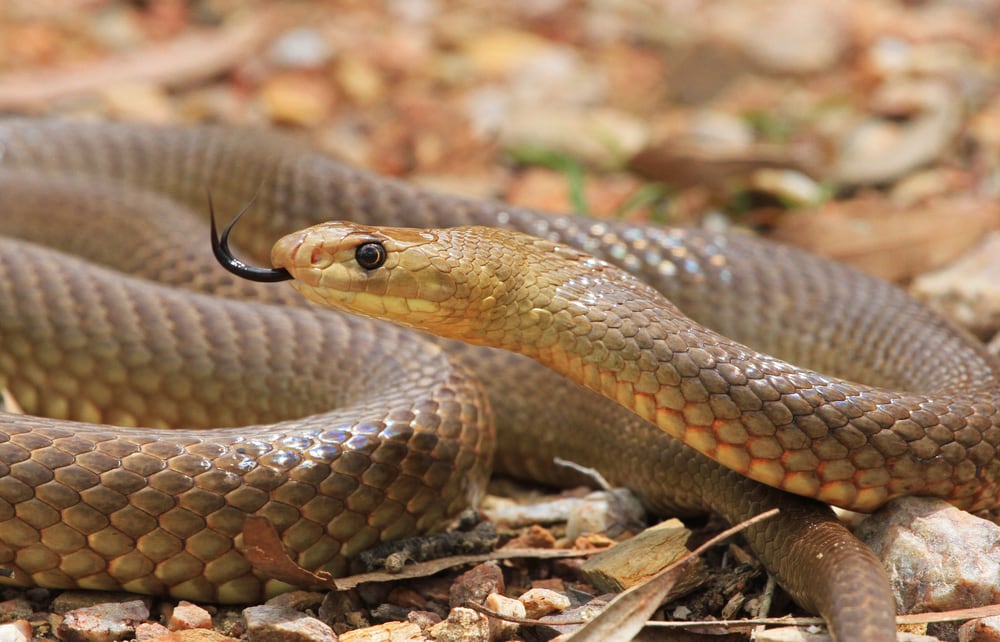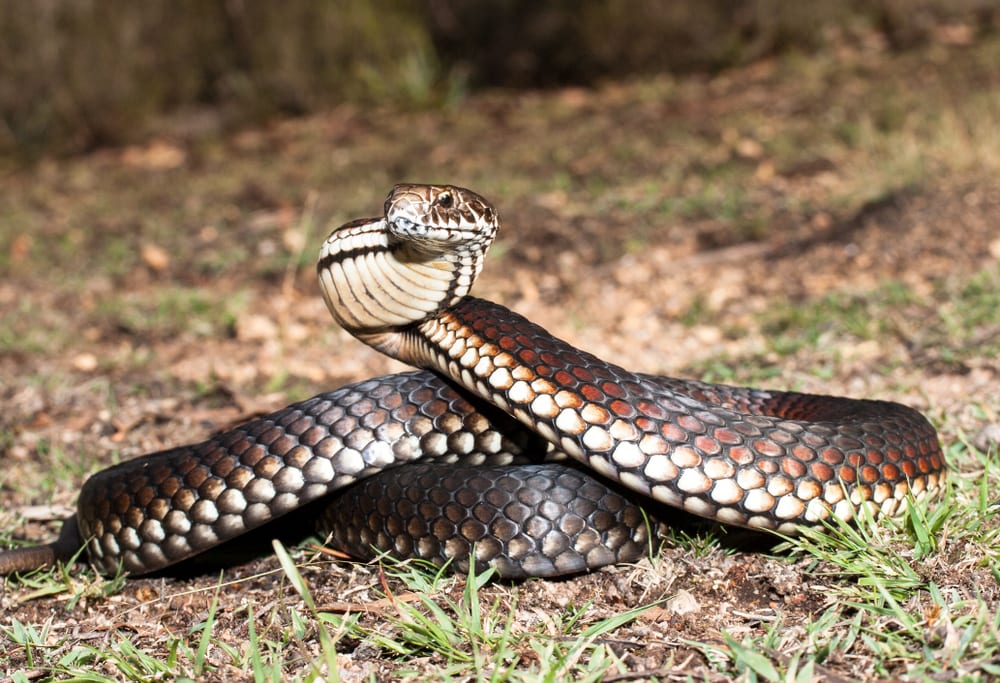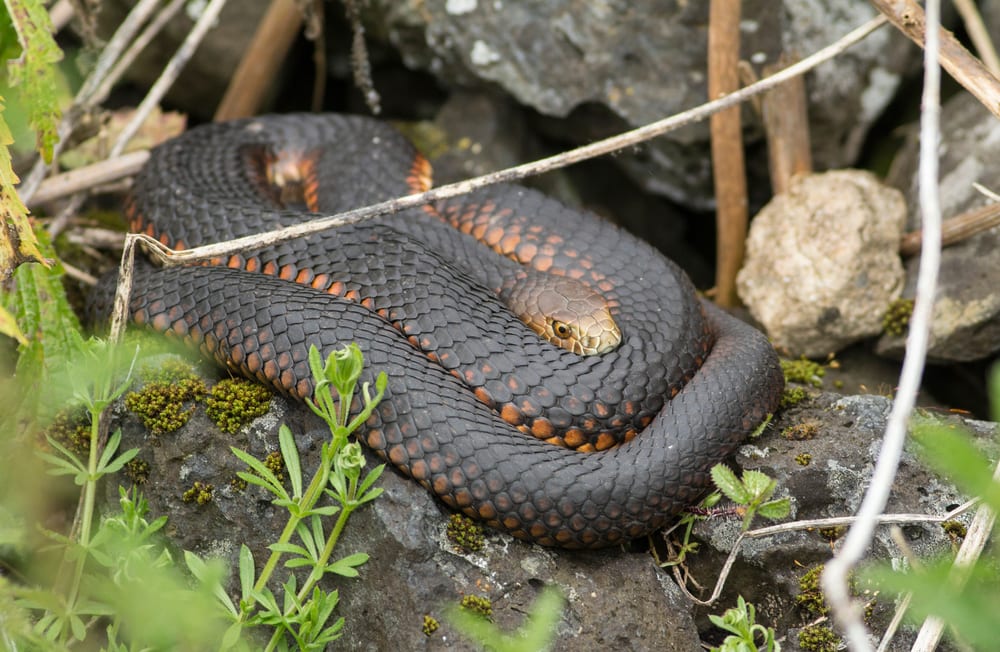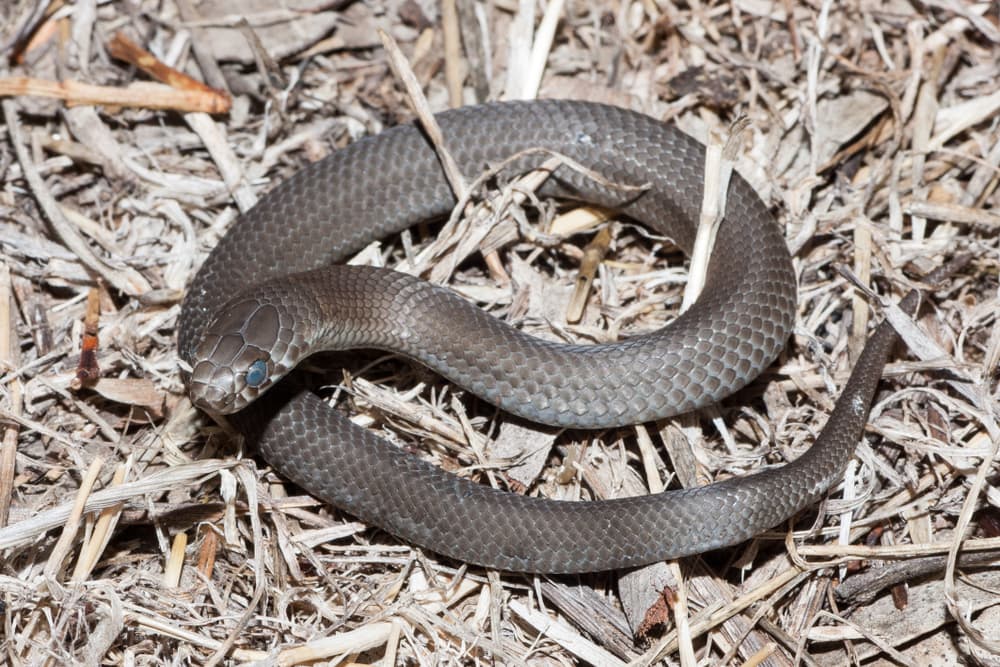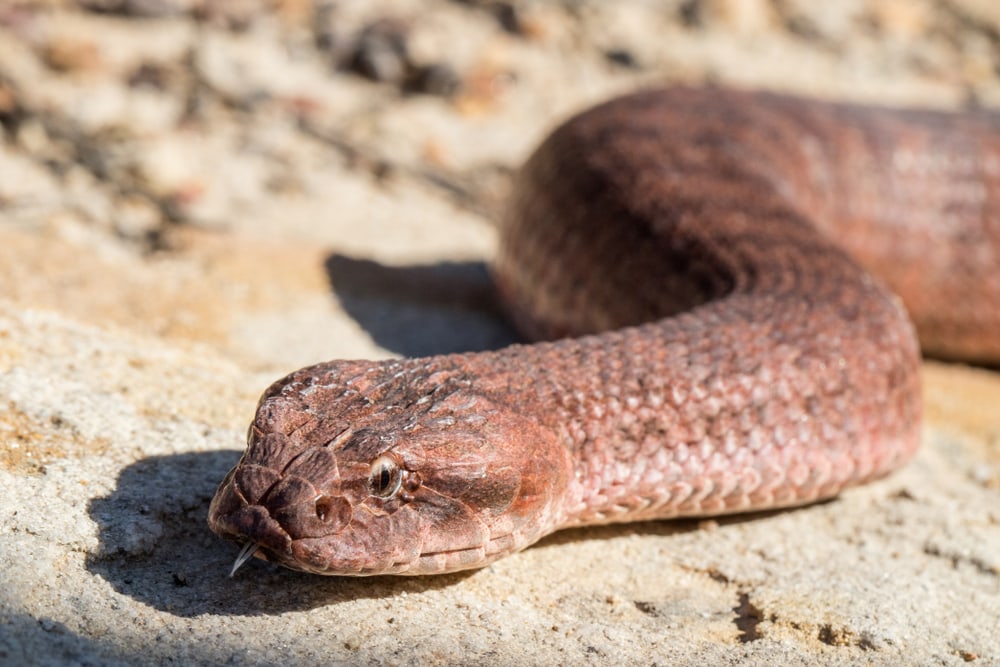
Australia has gained a reputation for being the “nope” capital of the world. It’s home to some of the scariest and most dangerous animals ever known. For every cute and cuddly animal, like wallabies, there’s something that can kill you in a single bite.
Some people wouldn’t feel safe in the oceans or on land. Thankfully, most of Australia’s deadly animals aren’t commonly found in your backyard.
Australian snakes hold a special place in the world rankings as well. 20 of the most venomous snakes in the world are native to the country, with the top 11 all native to Australia. Those 11 most venomous snakes are the ones we will be discussing here.
Note: The 7th most venomous is a subspecies of the 5th, so I’ll lump those together for a top 10.
Defining How Venomous a Snake Is
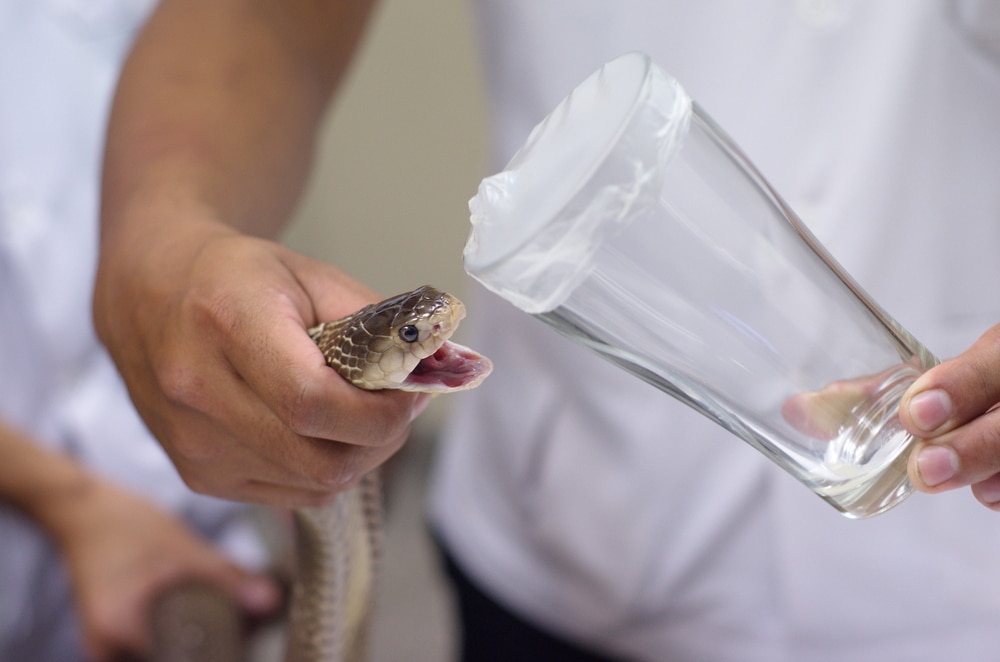
Deciding which snake is more venomous depends on which measurements you look at. Some snakes produce and release more venom than others. However, looking at quantity isn’t a great way to determine how deadly the snake’s venom is.
Instead, we’ll be looking at the potency of venom. The measurement “LD50” reflects how dangerous a snake’s venom is to a human. This is the milligrams of venom it takes to kill, divided by the kilogram weight of the victim.
LD50 tests are primarily done by injecting mice with snake venom.
The lower the measured number, the less venom is required to kill. This table is what we’ll be using for this list.
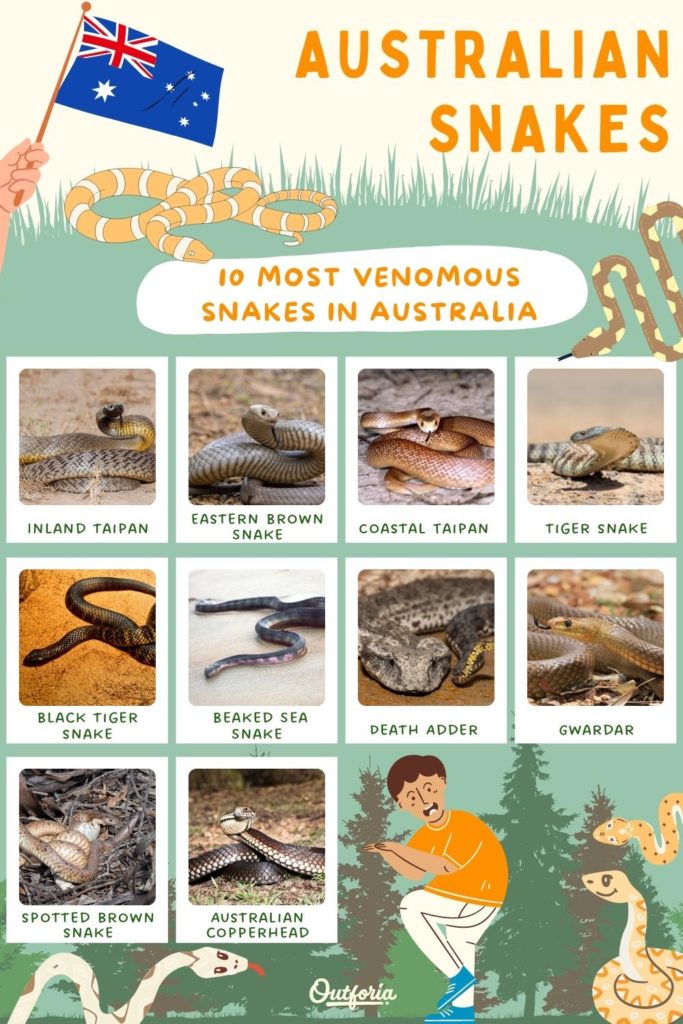
Share this image on your site
<a href="https://outforia.com/australian-snakes/"><img style="width:100%;" src="https://outforia.com/wp-content/uploads/2022/08/australian-snake-infographics-2-683x1024.jpg"></a><br>australian snakes <a href="https://outforia.com">Outforia</a>10 Most Venomous Snakes in Australia
1. Inland Taipan (Oxyuranus microlepidotus)
Venom potency: 0.025 LD50
The most venomous and deadly snake in the world is the inland taipan. They’re found in remote areas of Queensland and Southeastern Australia. They also spend most of their time in semi-arid outback environments. This is why they aren’t commonly encountered by people.
An average inland taipan reaches a length of around 6.5 feet (2 meters).
Their scale color can vary. Most inland taipans are either yellow-brown or dark brown. Their heads and necks are much darker than their body. The undersides are usually yellow with orange blotches. Many of the scales on its back have a dark black edge to them.
Inland taipans feed exclusively on small and medium-sized mammals. Long-haired rats and mice are their most common victims. Taipans corner them in a burrow to make catching the rodents easier.
Despite their incredibly potent poisons, these snakes are calm and shy. Snake handlers consider them easy to handle, though they will strike if threatened. To date, very few people have been bitten by inland taipans and all survived.
2. Eastern Brown Snake (Pseudonaja textilis)
Venom potency: 0.053 LD50
The eastern brown snake can be found throughout most of eastern Australia. It’s also known as the common brown snake. They inhabit a wide range of habitats but prefer open areas like grasslands. Brown snakes are commonly seen in rural areas around farms.
An average eastern brown snake reaches a length of around 5 feet (1.5 m). The snakes in the country’s northern regions are larger than those in the south. The largest eastern brown snake measured to be over 6 feet long (2 m).
Eastern brown snakes have small heads and a uniform color pattern. They have brown bodies which can range from black to light tan. Young snakes have a black patch on their head and black bands along their body.
Brown snakes eat a wide variety of small animals. They prey on frogs, birds, eggs, and other reptiles. The bulk of their diet is small mammals like mice and rats.
In captivity, they’re known to become cannibals. They tend to eat other brown snakes of a similar size to themselves.
They hunt at night and have perfect eyesight. Once they spot prey, they chase it down and consume it.
3. Coastal Taipan (Oxyuranus scutellatus)
Venom potency: 0.099 LD50
Coastal taipans have a very different attitude from inland taipans. They readily face down challengers and aren’t afraid of confrontation. This species is found along the northern and northeastern coastal regions of Australia.
An average adult coastal taipan will reach a length of 6.5 feet (2 meters). The largest confirmed specimen reached 9.5 feet (2.9 meters). Unconfirmed reports around ten feet aren’t unheard of.
Coastal taipans have distinctly rectangular heads. You can tell them apart from similar snakes by their pale face, thick head, and slender neck. Their color changes throughout the year. They’re darker shades in the winter and paler shades in the summer.
A coastal taipan’s diet consists of warm-blooded animals. Rodents are its primary food source, but they will also go after birds. They actively hunt for prey by sight. Once located, they lunge and strike their target one or more times. Then, the snake lets its poison kill the prey before consuming it.
4. Tiger Snake (Notechis scutatus)
Venom potency: 0.118 LD50
Tiger snakes can be found across southern Australia and on offshore islands. Populations occur in both of Australia’s southern peninsulas. This vast range has a large gap between the two population centers.
An average adult tiger snake reaches a length of around 3.9 feet (1.2 m). The large ones can reach lengths closer to 6.6 feet (2 m).
Tiger snakes get their name from their black and yellow crossbands. The most common color pattern is a dark brown back with white or yellow bands reaching up from the belly. Some populations don’t have bands at all.
Generally, tiger snakes live around water. Creeks, dams, lagoons, swamps, and wetlands are their main habitats. Tiger snakes inhabit areas from sea level to 3,000 feet (1,000 m) in elevation. The higher habitats are only seen in Tasmania’s mountainous regions.
They spend most of their time under cover. Dense vegetation and hidden burrows are their go-to hiding spots.
Tiger snakes prey on a variety of animals. Birds, lizards, frogs, fish, mammals, carrion, and eggs are all on their menu. They use their strong venom and constriction to take down prey.
They’re skilled at swimming and can stay underwater for nearly ten minutes. They’re also great climbers and have been found as high as 30 feet (10 m) off the ground! This allows tiger snakes to go after prey where other snakes can’t reach.
5. Black Tiger Snake (Notechis ater)
Venom potency: 0.131 LD50
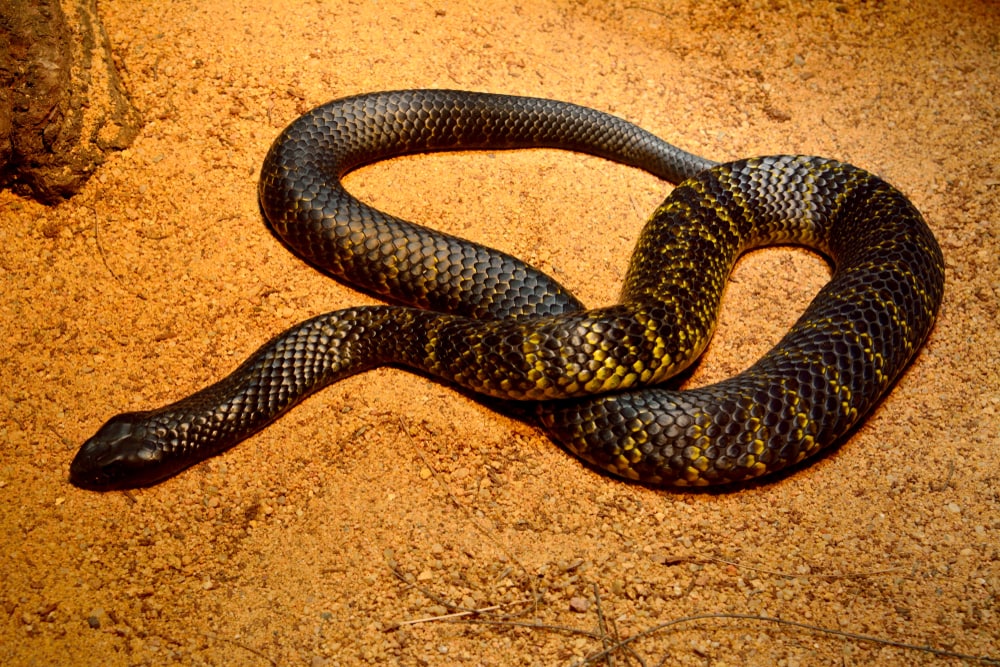
Black tiger snakes are morphologically same as tiger snakes. All tiger snake subspecies are genetically one species. But each species can vary in color, pattern, and behavior. Technically speaking, Notechis scutatus is the proper scientific name for this snake.
It was only recently discovered that the two are the same species. Since they have different venom potencies, this one still makes the list.
Black tiger snakes reach the exact average sizes of tiger snakes. They’re found on offshore islands, Tasmania, and its southern peninsulas.
A tiger snake’s diet can vary based on location. They eat fish, frogs, lizards, birds, mammals, and carrion. They can climb and swim, allowing them to get to prey in hard-to-reach places.
The seventh most venomous snake is the Chappell Island black tiger snake. This “sub-species” has a less potent venom than other black tiger snake populations at 0.194 – 0.338.
6. Beaked Sea Snake (Enhydrina schistosa)
Venom potency: 0.164 LD50
You can find beaked sea snakes off Queensland’s coast and Australia’s Northern Territory. Also known as common sea snakes, they’re found throughout the Indo-Pacific region. They live in shallow water around estuaries, coastal lagoons, reefs, and islands.
Beaked sea snakes are grayish-blue on top with white or pale gray undersides. This helps them blend into their aquatic environment.
Sea snakes are fully aquatic and can spend up to five hours underwater without breathing. They have special glands unique to sea snakes that help get rid of excess salt. These glands allow them to survive in the ocean.
Sea snakes dive to depths of up to 320 feet (100 m). They only feed on fish and other sea creatures.
Unlike some snakes on the list, sea snakes can be very aggressive. Most adults reach lengths of around 4.5 feet (1.4 m).
7. Death Adder (Acanthophis antarcticus)
Venom potency: 0.400 LD50
Death adders are small but deadly snakes. Their range in Australia extends throughout the eastern and northern coast. They also reach the southern regions from Perth to Adelaide.
An average adult death adder will reach a length between 15 and 40 inches (40-100 cm).
Death adders have distinctly triangular heads and short bodies. Their color pattern tends to be grayish brown with darker bands. It helps them blend in with the fallen leaves of their woodland homes.
There are several species of death adders in Australia. All of these species have similar venom potencies.
Most of a death adder’s diet is made up of frogs, lizards, and birds. Instead of actively hunting, they sit in one spot and wait for prey. Their yellow tail looks like a grub which they use as a lure.
Death adders sit covered in foliage and flick their tail to attract prey. Once it comes closer, they quickly strike and deliver a deadly amount of poison. They then wait for the prey to die before eating it.
Antivenom has made death adder bites much less dangerous. Before antivenom was developed, death adder bites were fatal in around 60% of cases.
8. Gwardar (Pseudonaja nuchalis)
Venom potency: 0.473 LD50
Gwardars are hard to tell apart from other similar snakes. It takes a good eye and a close look to tell it apart from other brown snakes. They’re also known as the western brown snake.
Gwardars live in the Northern Territory, usually above the 17 degrees south line. They prefer the barren regions of the outback. Grasslands, shrubland, and dry forests are their ideal habitats.
They tend to reach a length of around 5 feet (1.5 m). They have slender bodies and chisel-shaped heads. Generally, gwardars are a shade of brown on their back. This can range from a pale brown to a very dark brown.
Vertebrates make up the majority of their diet. Lizards, birds, and smaller snakes are all on their menu. Small mammals such as rodents are also included. This is especially true around human settlements.
9. Spotted Brown Snake (Pseudonaja affinis)
Venom potency: 0.360 LD50
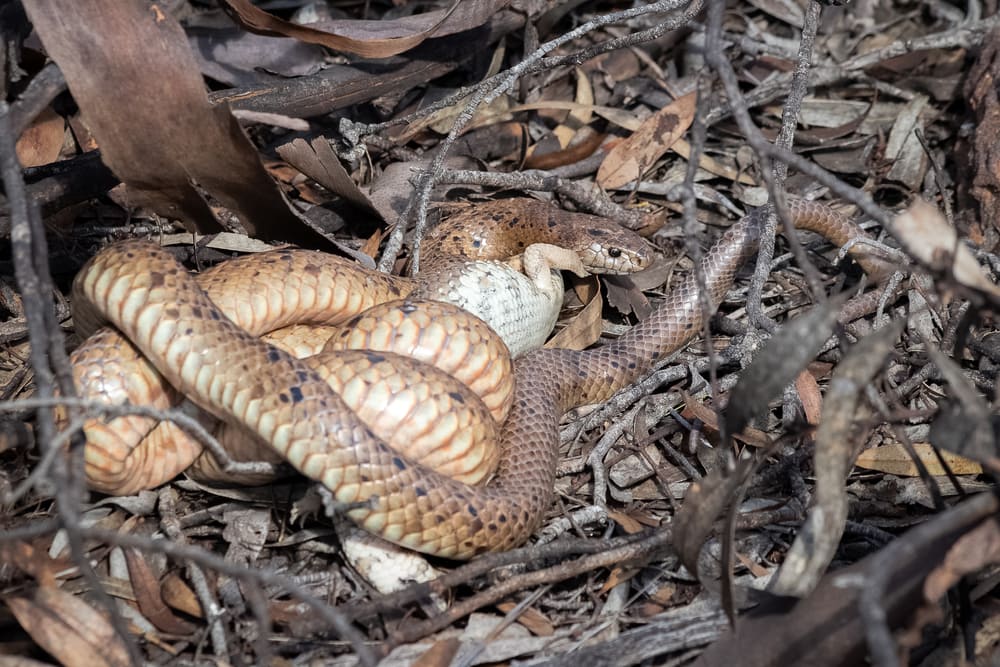
Spotted brown snakes, also known as dugites, are Australia’s tenth most venomous snake. This is because the measurement came from cows instead of mice.
The spotted brown snake overlaps ranges with the other brown snakes on this list. They’re generally found in Australia’s southwestern regions and a few offshore islands.
Average adult spotted brown snakes reach lengths of around 5 feet (1.5 m). This measurement is similar to other brown snake species.
Coastal dunes, forests, and woodlands are their ideal environment. These snakes have adapted well to human areas. They commonly make their home on golf courses, industrial parks, and farms. They dig burrows in the winter and can be found under concrete slabs and other man-made shelters.
Spotted brown snakes mainly feed on lizards and mice. They also go after frogs and birds. Sometimes, spotted brown snakes eat other snakes, including their own species. They can even consume snakes nearly the same length as themselves!
Spotted brown snakes cause roughly 70% of snake bites in Perth hospitals. They’re common in residential areas and are quick to bite. This is why that number is so large. Thanks to antivenom and medical care, only one fatality is attributed to these snakes.
10. Australian Copperhead (Austrelaps superbus, Austrelaps labialis, and Austrelaps ramsayi)
Venom potency: 0.560 LD50
The three Australian copperheads beat cobras on this list by 0.005 LD50.
The scientific name for lowland copperheads is Austrelaps superbus. They’re found in the extreme southeast region of Australia and Tasmania. Grasslands, woodlands, and open scrub are ideal habitats for these snakes. They love to be around water and inhabit swamps, marshes, and rivers.
The scientific name for pygmy copperhead is Austrelaps labialis. This species is only found in the Mount Lofty mountain range of Kangaroo Island and Adelaide.
The Highland Copperhead’s scientific name is Austrelaps ramsayi. It’s found around New South Wales and in eastern Victoria. They prefer open woodland and forests. It loves to burrow under stone outcrops and in dense vegetation.
All copperheads have similar physical features. They have black or brown backs with hints of orange in it. Their undersides are pale and some have a dark band on their neck. They get their name from the shiny copper color of their head and neck area.
Each species of copperhead reaches a different average length.
- Lowlands copperhead: 57 inches (145 cm)
- Pygmy copperhead: 33 inches (84 cm)
- Highlands copperhead: 45 inches (115 cm)
Most of a copperhead’s diet is made up of insects, frogs, lizards, and smaller snakes. Sometimes, they’ll take warm-blooded animals like mice. Their favorite food is reported to be skinks.
You may also like: 21 Different Types Of Rattlesnakes Species: Pictures And Guide
Why Are Australia’s Animals SO Deadly?
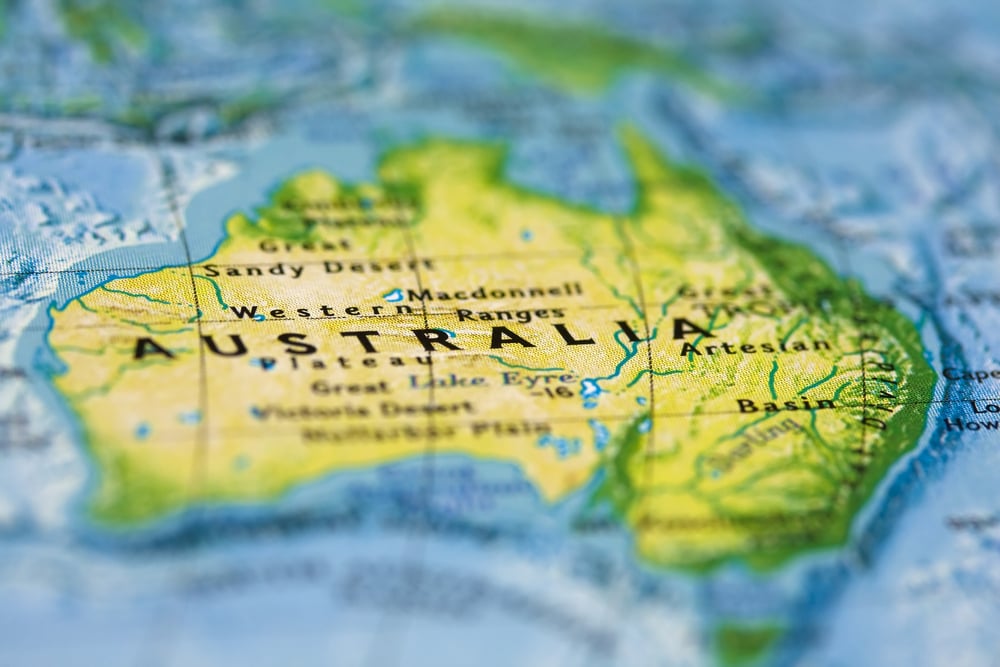
Snakes aren’t the only dangerous animals in Australia. Blue-ringed octopuses are one of the world’s most venomous animals. Saltwater crocodiles stalk the rivers across parts of Australia. Even great white sharks make their homes off the coast.
Those examples don’t even mention venomous spiders, jellyfish species, and stonefish. Even some of the lizards in Australia secrete venom.
So why are there so many venomous and deadly creatures in Australia anyway?
Part of the reason is because of Australia’s geographic location. Larger creatures like great white sharks and saltwater crocodiles have large ranges. This also includes Australia.
The other reason is continental drift. Australia is one of the most isolated places on Earth. It sits on a tectonic plate separated from Africa and Antarctica around 30 million years ago. Since then, it has traveled toward Asia.
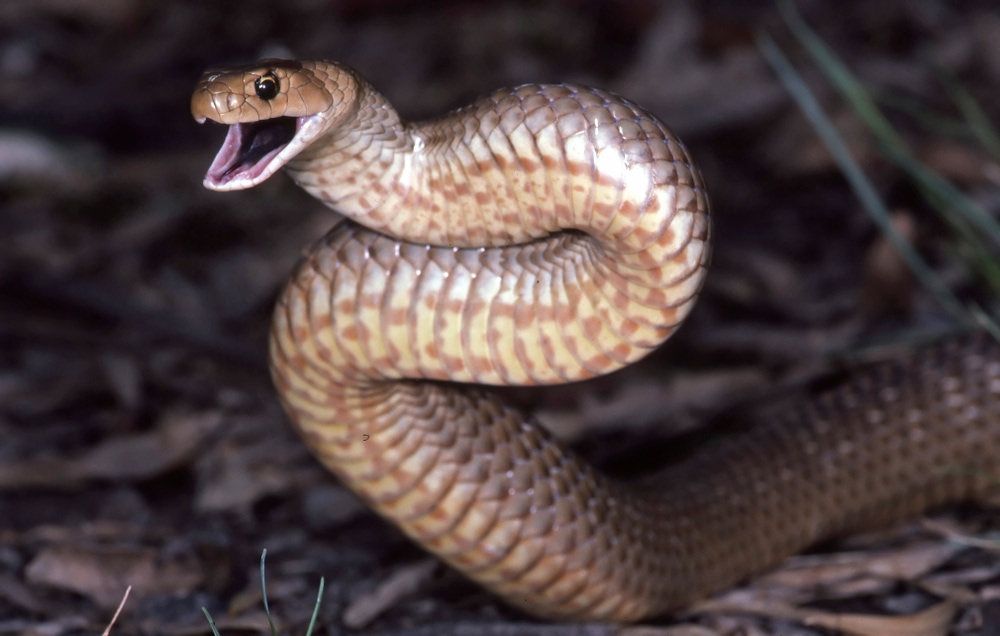
The venomous snakes in Australia are almost all related. The family they belong to, the elapids, were likely on the continent when it separated from Africa. Those that weren’t already there swam over from close archipelagos.
Due to isolation, an arms race began. Snakes and animals with stronger venom were more efficient at killing prey. Those were the snakes that survived and passed on their genes.
As prey animals developed better defenses, predators had to create better weapons. In evolution, only the most successful species get to pass on their genes. This results in stronger venoms and more efficient predators.
Isolation from other regions also eliminated competition from species moving in. Only animals that can move from island to island can reach Australia. This is why it has some of the most unique creatures in the world.
Other animals developed venoms for defensive purposes. Platypuses are one of the only known venomous mammals. They’re also one of the few that lay eggs and are an odd case unto themselves.
Stonefish use their venomous spines to deter predators. While being the most venomous fish in the world may be overkill, it’s a very effective survival method.
Due to the multi-million-year evolutionary arms race, Australia’s animals evolved to be the deadly animals they are today.




